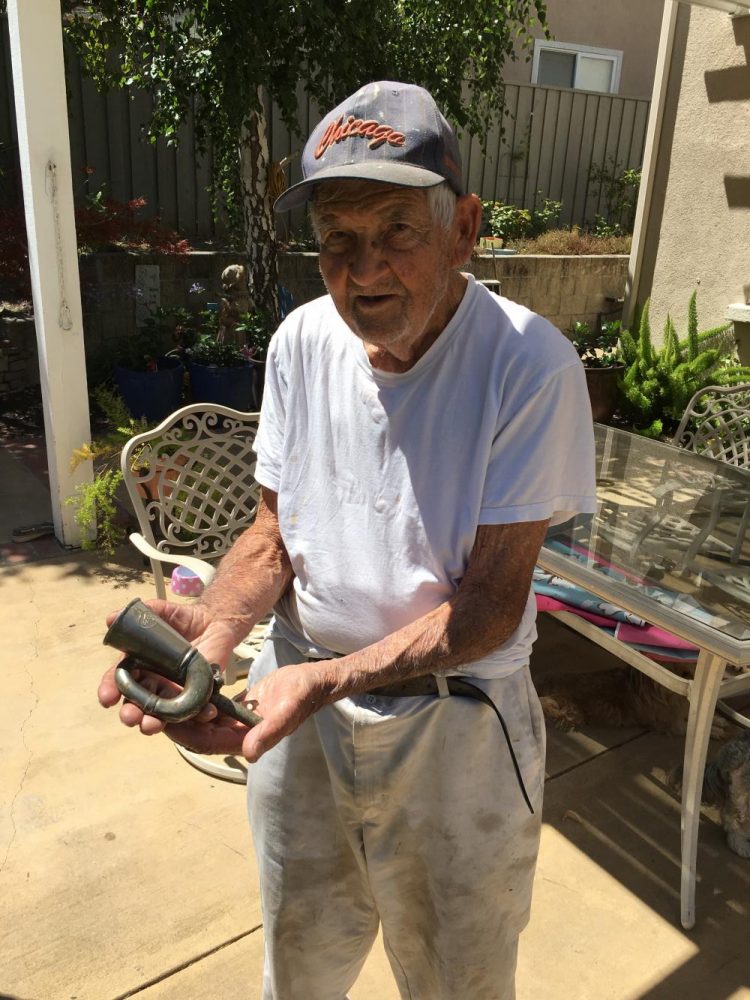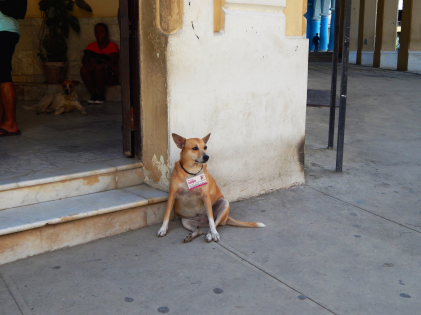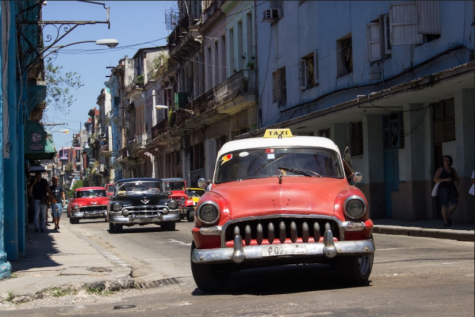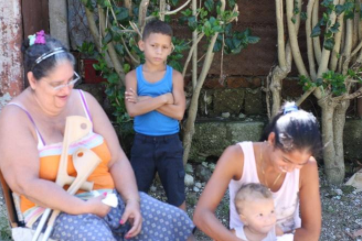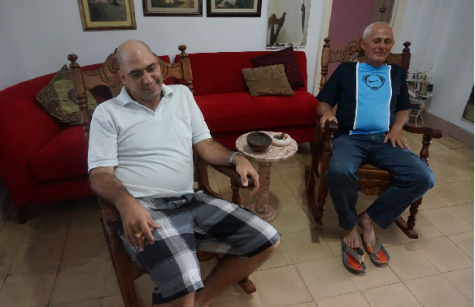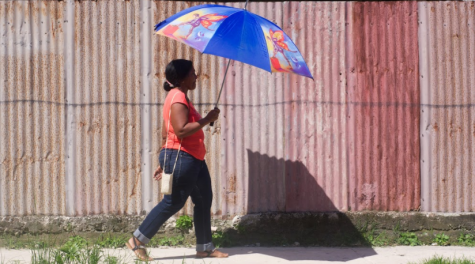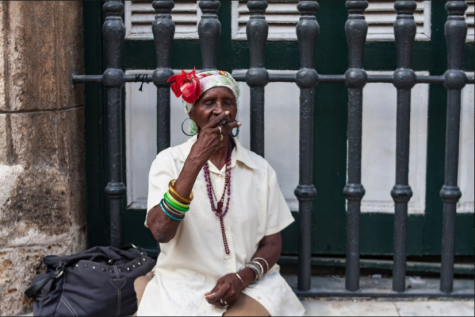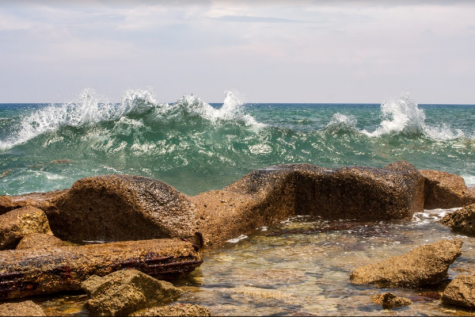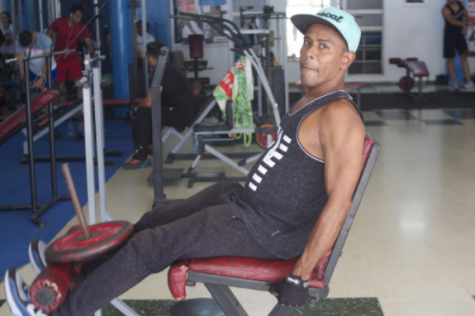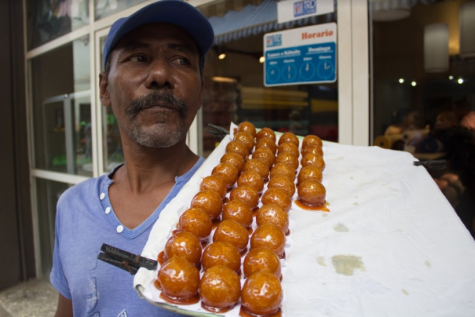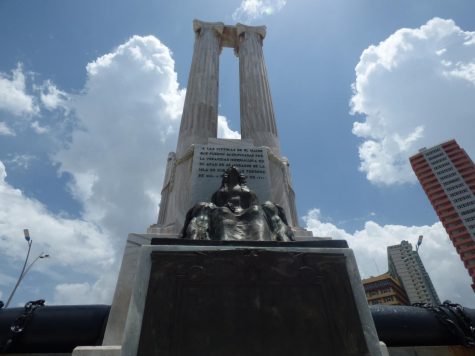A walk through Caibarién in my grandfather’s shoes
August 29, 2017
On Jan. 28, 1962, Juan Francisco Luna, or “Illo,” pronounced ee-yo, left his home at 3 a.m. towards the Atlantic Ocean just two blocks from his doorstep in Caibarién, Villa Clara, Cuba. From a “chapín,” or rowboat, to a sailboat, to a fishing boat, there were a total of 14 refugees on board, just 90 miles south of new lives. At 39, Illo was not the oldest among the 14 or the youngest. Carlita and Angel Luis, his wife and son, would trail behind him a few months later, making the same journey through the open ocean. Carlita, or Yaya as her grandchildren knew her, was a loving, strong, and independent woman.
“At 7 a.m. as the sun was rising, all you could see were the houses, so far away,” Illo said. “And that makes one sad, just the few of us who were coming without knowing what, without any family…the majority of us didn’t have anyone here…”
Fifty-five years later, on my flight between Miami and the Santa Clara airport, I was anxious. I glanced down at the ocean and was reminded of the three-day journey my grandfather Illo made over 55 years ago.
Illo is the most stubborn human I have ever known, and hard-working. At 95 years old, he keeps himself active in the backyard and around the house, constantly finding ways to fix things that aren’t exactly broken, or “invent” contraptions like his own scaffolding to make something work efficiently. He still complains that the DMV won’t let him drive a car due to his eyesight and he doesn’t need to read specific street signs to drive.
It was his stubbornness and hard work that drove Illo to leave Cuba. Once the Revolutionaries began meddling with his income by changing his hours and wages and making it difficult for him to own the property he had worked hard for, he combatted the Communists with his stubbornness.
He tells me stories of how Communist leaders waited for the workers outside of the “la tenería,” or tannery, where he spent many hard-working years leading up to the revolution. They passed out propaganda and talked to them about Russia, but he wasn’t interested in talking about communism after an eight-hour workday.
Disembarking the airplane, my anxiety was at an all-time high. I scanned the crowd, looking for the familiar face of my cousin, 20-year-old Abieser Delgado, that I’ve only seen on Facebook and two grainy and video calls.
When we locked eyes, each of us smirked and nodded.
We squeezed each other like old friends reconnecting after years of separation. For the next week and a half, I was Primo; Daniel was my secondary name.
There was one story my grandfather often told, one of forbidden love. Carlita, his future wife, wasn’t allowed to see him in their younger years, but he found ways to connect with her. One way was using his bike horn, or as he referred to it, “La Corneta.” For years I was misled by the name he gave it; I thought it was an actual cornet, but it was a German-made, Hackel brand bike horn from the 1940s. It was special because it swiveled left to right and allowed him to direct the sound of the horn.
According to his story, the horn made two distinct sounds. One when the balloon was squeezed, and another when the balloon would suck the air back in. When he passed by my grandma’s house, he would turn that horn in the direction of the house and give it a squeeze. The special honk was Carlita’s cue to come to the doorway, give him a wave and blow a gentle kiss. That was the beginning of their future together.
I counted the freeway signs on my way to Caibarién, each kilometer made me anxious.
A few blocks after the monstrous cement crab at the entrance of Caibarién, the taxi arrived at the house I would call home for the next week and a half. The rest of Abieser’s family waited outside for my arrival: Sandra, Yonny, and their six-year-old Andy. The second the door opened and my feet were planted, I heard in unison, “Primo!” they welcomed me to my home.
I felt an immediate warmth from them; a connection I have never felt with other strangers. I felt like I knew them already. I was welcomed with hugs and kisses and they were surprised at the amount of Spanish I spoke. I told them it was thanks to Illo, who I was fortunate enough to practice with over the years.
That first night, my primos and I sat on their second-floor porch drinking Havana Club rum, smoking cigars, and discussing our lives. By the end of the night, we were in tears, dancing, embracing each other, and singing “Hotel California” in the kitchen. I never thought I would have such a quick connection with people I just met, but by the end of my stay in Caibarién, Abieser considered me his brother and I did the same.
One evening, after a full shift at “la tenería,” communist leaders passed out flyers that they expected the workers to post on their homes, which stated, “Fidel, esta es tu casa,” or “Fidel, this is your house.” Illo told them he would only post it when it said, “Fidel esta no es tu casa.” Similar remarks like these put him and many of his family members, friends, and neighbors, on a watch list of Contra-Revolutionaries. Once enough information was gathered against an individual for opposing the revolution, they were jailed and some were even tortured.
Knowing this, Illo’s mother told him his best chance of avoiding imprisonment was fleeing Cuba and starting a new life in the United States. That’s what he did. After a few weeks of preparation, he left in pursuit of the American Dream.
“From 1960 to 1964 around 172,919 Cubans arrived in the United States,” according to the book Political Disaffection in Cuba’s Revolution and Exodus. Juan Francisco Luna, Lllo, was one of the fortunate ones.
Before my trip, my family showed me a random traveler’s Youtube video of Calle Jimenez and when the camera passed Illo’s house, they would pause the video. We watched the video a few times in the months leading up to my departure and every time my uncle would mention, “that’s the door Santiagito’s casket was brought out of” and Illo would pipe in, “that’s the window Carlita hit that lady over the head with the pressure cooker lid.” Santiagito was my grandparents’ son who had Leukemia and passed away at seven. It has been 11 years since Carlita’s passing.
As the “coche,” or horse-drawn carriage, approached his house, my eyes were immediately drawn to the façade, which had been painted a brilliant light pink, while the other three-quarters of the house remained the yellow-tan that I remembered from the grainy Youtube video. It had so much more life in person. The side door of the home where my grandma once provided services like nail-painting, hair-dressing, eyebrow-waxing, and tailoring was wide open. I peered in and saw a man hunched over a bucket, stirring a colorful liquid. It was paint. That explained the strange board with wood panels of different colors on the sidewalk; he now sold different paints from the side store. I wracked my brain for a symbolic connection to my grandfather’s life in Hayward where he painted apartments for a living, but the thought was quickly buried by my emotions. He noticed my interest in the house and came out.
After speaking to the current dweller—because according to Illo, the owner of the house is still himself—I was able to enter the home and tour it, front to back. I walked through the house my grandfather built, I peered into the rooms, noticed the colorful floral tile, admired the old wood windows, and loved a sloppy brick wall that my sister would later say, “definitely looks like grandpa’s work.”
It was impossible to know what changed in the 55 years since my grandfather lived in it, but being there, it made no difference to me. I was in the house Illo constantly talked about building with his own hands, with materials he bought with his and his wife’s hard-earned money. The house both of his sons were born in and one of them died in. I felt privileged and lucky to be there. All I could think about was showing him the video and seeing the gratification light up his face.
Out of his six siblings, only one stayed in Caibarién. Felix Luna, my great uncle, lived the hardest life of them all, being the only Luna left to manage the few properties and street markets they shared among the family. The government watched his every move and waited to catch him fleeing the country or bashing them. They would call him and other Contra-Revolutionaries “gusanos,” or worms.
The rest of the Lunas fled the same way Illo did, through the Atlantic but I never met Felix because he passed about a year before my arrival to Cuba. Estrella, his wife, still lives in Caibarién at 91-years-old.
After visiting my grandfather’s home on Jimenez and Quinta, two street names I will never forget from the number of times he repeated them before my departure, I walked the same path he walked 55 years earlier. I exited from his front door and turned right at the corner, and the ocean was straight ahead. I walked slowly with my cousin beside me, feeling the ocean breeze.
I sat on the rocks for nearly thirty minutes staring out into that water. There were white sailboats on the horizon. I touched the lukewarm water and tears welled up in my eyes. Illo’s voice echoed in my mind from a childhood memory: “Men do not cry.” Immediately I pulled them back. Looking out into the vast blue field of waves, I thought, how the hell did he do it at age 39? I’ve always asked myself that question and looking out into that ocean, it only baffled me more.
The strength he had and the courage my grandmother had three months after him is insurmountable.
All that anxiety built up inside me just to sit on a plane and go to Cuba, I couldn’t grasp the anxiety he must have felt traveling that distance by boat, not knowing whether he would survive the journey. He didn’t know English and had nothing but the clothes on his back, 39 years of wisdom and 366 pesos.
After visiting the calming, yet intimidating ocean, there was only one last main item on my checklist for my time in Caibarién: La Corneta. Illo said Felix had it stored for him and in the months leading up to my trip Estrella received word of my visit and readied it for me. She kept it safe for Illo for more than 55 years.
When she gave it to me, I stared at it in my hands for a long time. It was rusty, had a dent that I knew grandpa would be displeased with and was missing the balloon. I wanted to take that horn to him right then and there. I was so worried that over the following three weeks I was staying in Cuba I would lose or destroy it. Luckily, La Corneta made it safely back home to its owner.
I reached Oakland a little after 3 a.m. where my family, including Illo, were waiting for me. I could not wait to give him his treasure. I gave it to him, in front of the baggage carousel, immediately after greeting everyone. It was perfect. I knew it was exactly what was on his mind. He stared down at it, holding it in both hands, speechless. I have never seen him cry before, not even when Yaya died, but I swore I could almost see a slight glint in his eye when he looked up with that half smile, thanking me.
“I can’t believe that after 50 years this has actually made it back to me.”




